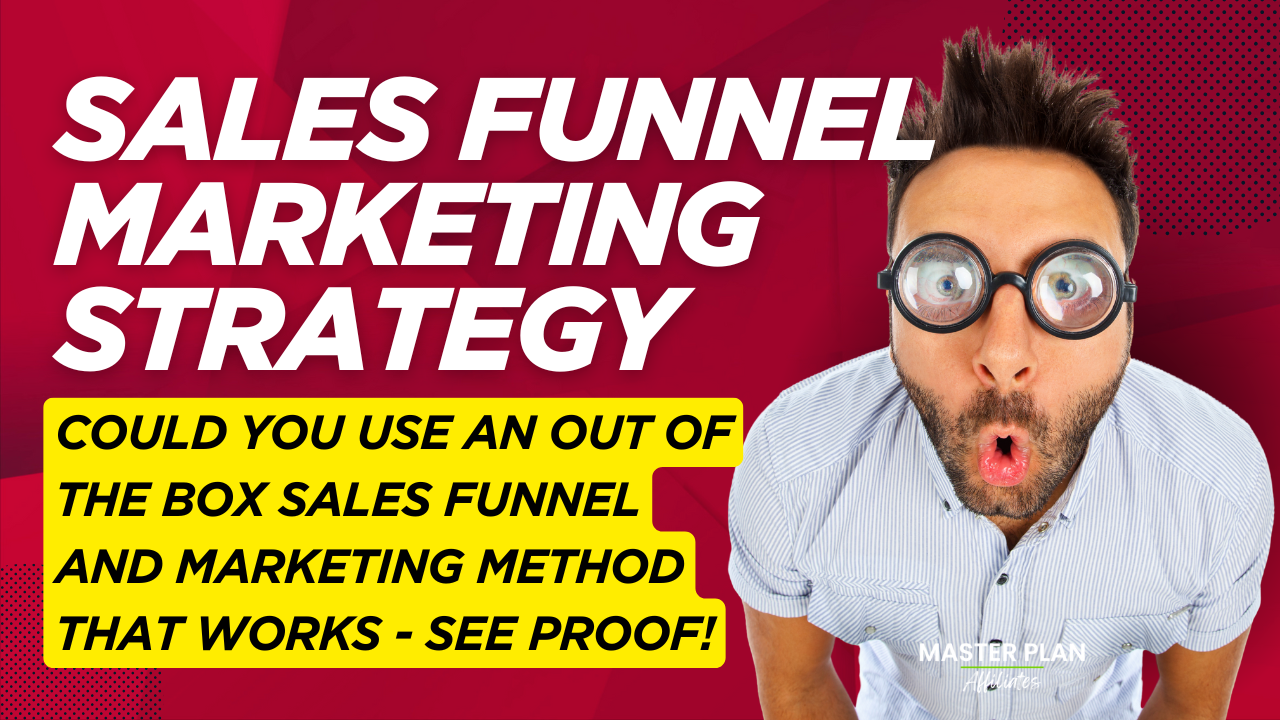In today’s crowded digital landscape, simply having a website and throwing traffic at it rarely leads to sustainable success. Businesses need a structured approach to guide potential customers from initial awareness to loyal patronage. This is where a powerful Sales Funnel Marketing Strategy becomes not just beneficial, but absolutely essential.
If you’re struggling with inconsistent leads, low conversion rates, or a disjointed customer journey, mastering your sales funnel is the key to unlocking predictable growth and maximizing your marketing ROI.
Want To Skip Reading And See a Proven Sales Funnel and Marketing Strategy Combined?
CLICK HERE FOR A 7 DAY FREE TRIAL
What Exactly IS a Sales Funnel Marketing Strategy?
Think of a physical funnel – wide at the top, narrow at the bottom. A sales funnel applies this concept to your marketing and sales process. It’s a strategically designed pathway that guides potential customers through a series of steps, filtering and nurturing them until they become paying customers (and ideally, repeat buyers).
A Sales Funnel Marketing Strategy is the overarching plan that defines:
- WHO you are targeting.
- HOW you will attract them (traffic generation).
- WHAT steps you will guide them through (the funnel stages).
- WHY they should move to the next step (value proposition, offers).
- HOW you will convert them into customers and retain them.
It moves beyond random acts of marketing and creates a deliberate, measurable system.
Why is a Defined Strategy Crucial?
Implementing a clear Sales Funnel Marketing Strategy offers numerous advantages:
- Targeted Lead Generation: Attract prospects genuinely interested in what you offer.
- Improved Conversion Rates: By addressing specific needs at each stage, you increase the likelihood of conversion.
- Predictable Revenue: A well-optimized funnel provides more foreseeable sales patterns.
- Enhanced Customer Relationships: Nurturing leads builds trust and rapport before the sale.
- Automation Potential: Many funnel stages can be automated, saving time and resources.
- Measurable Results: Easily track performance at each stage to identify bottlenecks and areas for improvement.
Key Components of an Effective Sales Funnel Marketing Strategy
While funnels vary depending on the business model and offer, most effective strategies include these core components:
- Traffic Generation (Top of Funnel – TOFU): This is how you attract initial attention and bring people into your funnel. Strategies include:
- Content Marketing (Blog posts, SEO)
- Social Media Marketing (Organic & Paid)
- Search Engine Marketing (PPC Ads)
- Paid Traffic (e.g., Solo Ads): Particularly useful for predictable volume when targeting specific niches or using proven systems.
- Video Marketing
- Referral Marketing
- Lead Capture (Middle of Funnel – MOFU): You can’t nurture someone if you can’t contact them. This stage focuses on converting visitors into leads by capturing their contact information (usually email).
- Landing Pages/Squeeze Pages: Dedicated pages offering a valuable lead magnet (e.g., free guide, webinar, checklist, discount) in exchange for contact details. Crucially, sending traffic here is often far more effective long-term than sending directly to a sales page.
- Lead Nurturing (MOFU): Once you have a lead, the goal is to build trust, provide value, and guide them towards a purchase decision.
- Email Marketing Sequences: Automated series of emails educating, building authority, addressing pain points, and introducing your solution.
- Retargeting Ads
- Webinars/Workshops
- Sales Conversion (Bottom of Funnel – BOFU): This is where you present your core offer and ask for the sale.
- Sales Pages: Detailed pages outlining the benefits, features, social proof, and call-to-action for your product/service.
- Consultation Calls
- Checkout Process
- Follow-Up & Retention: The journey doesn’t end with the first sale.
- Onboarding sequences
- Upsells/Cross-sells
- Loyalty Programs
- Continued value-driven email communication
Developing Your Winning Strategy: Steps to Take
- Deeply Understand Your Ideal Customer: Define their pain points, desires, challenges, and where they spend their time online.
- Define Your Irresistible Offer(s): What core product/service are you selling? What lead magnet will attract your ideal customer?
- Map Your Funnel Stages: Outline the specific steps a customer will take, from initial contact to purchase and beyond.
- Choose Your Traffic Sources: Select the most effective channels to reach your target audience based on your resources and goals. Consider proven traffic methods for predictability.
- Build Your Assets: Create your landing pages, sales pages, emails, lead magnets, and ad creatives. Utilize funnel-building software if needed.
- Implement Automation: Set up email sequences and other automated workflows to nurture leads efficiently.
- Integrate Advanced Tactics (The Modern Edge): Consider strategies that leverage:
- AI Assistants: For initial engagement, answering common questions, and even qualifying leads 24/7.
- Combined AI + Human Touch: Systems where AI handles initial follow-up before seamlessly handing off qualified leads to a human sales team for closing. This blend offers scalability and personalization.
- Proven “Done-For-You” Systems: Look for established funnels and marketing strategies with documented success, especially if you need speed and efficiency.
- Track, Analyze, Optimize: Continuously monitor key metrics (conversion rates per stage, cost per lead, customer lifetime value) and make data-driven adjustments.
Conclusion: Strategy is Everything
A well-crafted Sales Funnel Marketing Strategy transforms your marketing from a guessing game into a predictable engine for growth. It allows you to systematically attract, nurture, and convert leads while building lasting customer relationships. By understanding the core components, implementing proven tactics (potentially including AI and automation), and continuously optimizing based on data, you can build a robust funnel that drives consistent results for your business.
Stop leaving money on the table with disjointed marketing efforts. Start building your strategic sales funnel today!


Leave a Reply